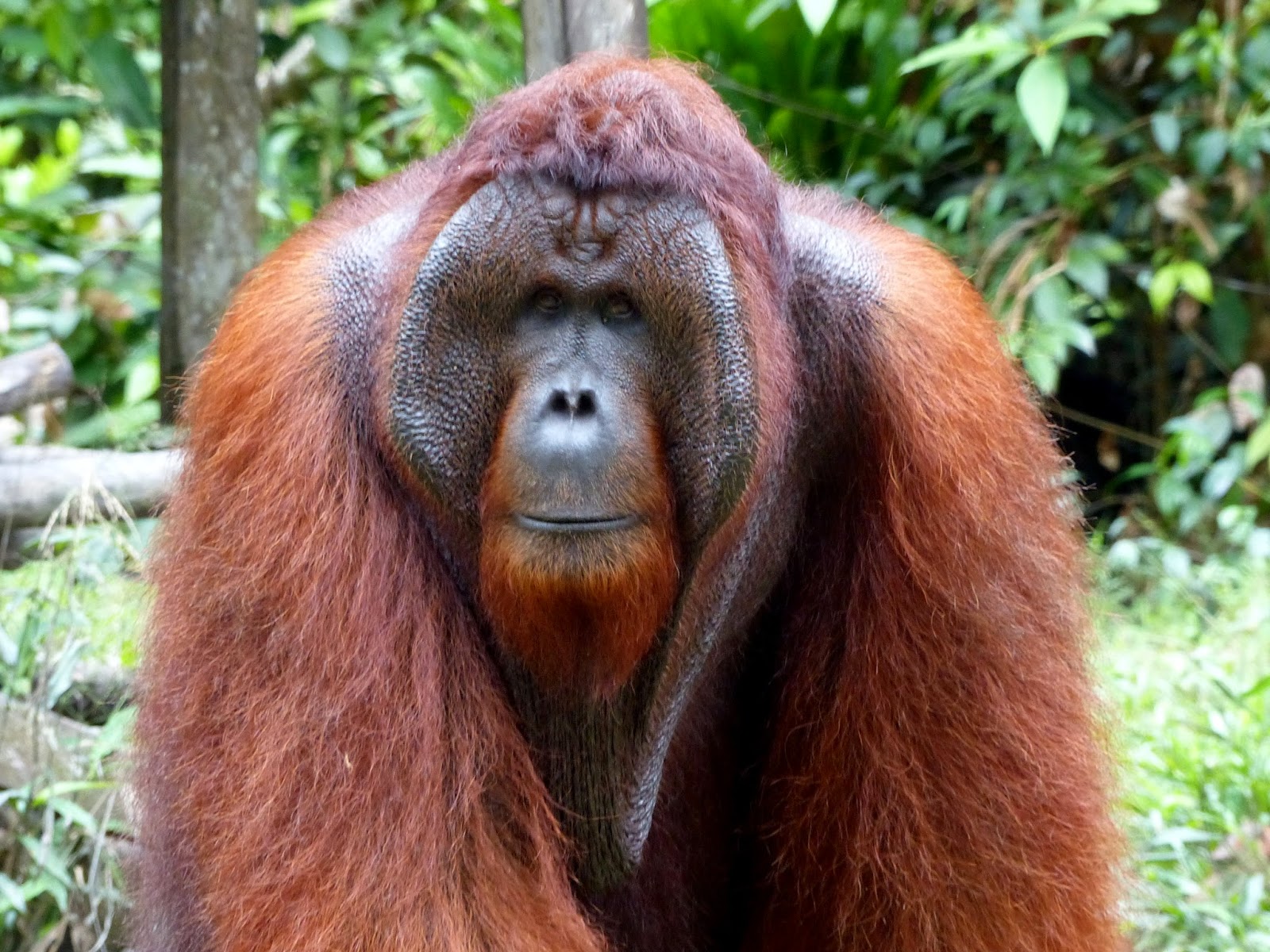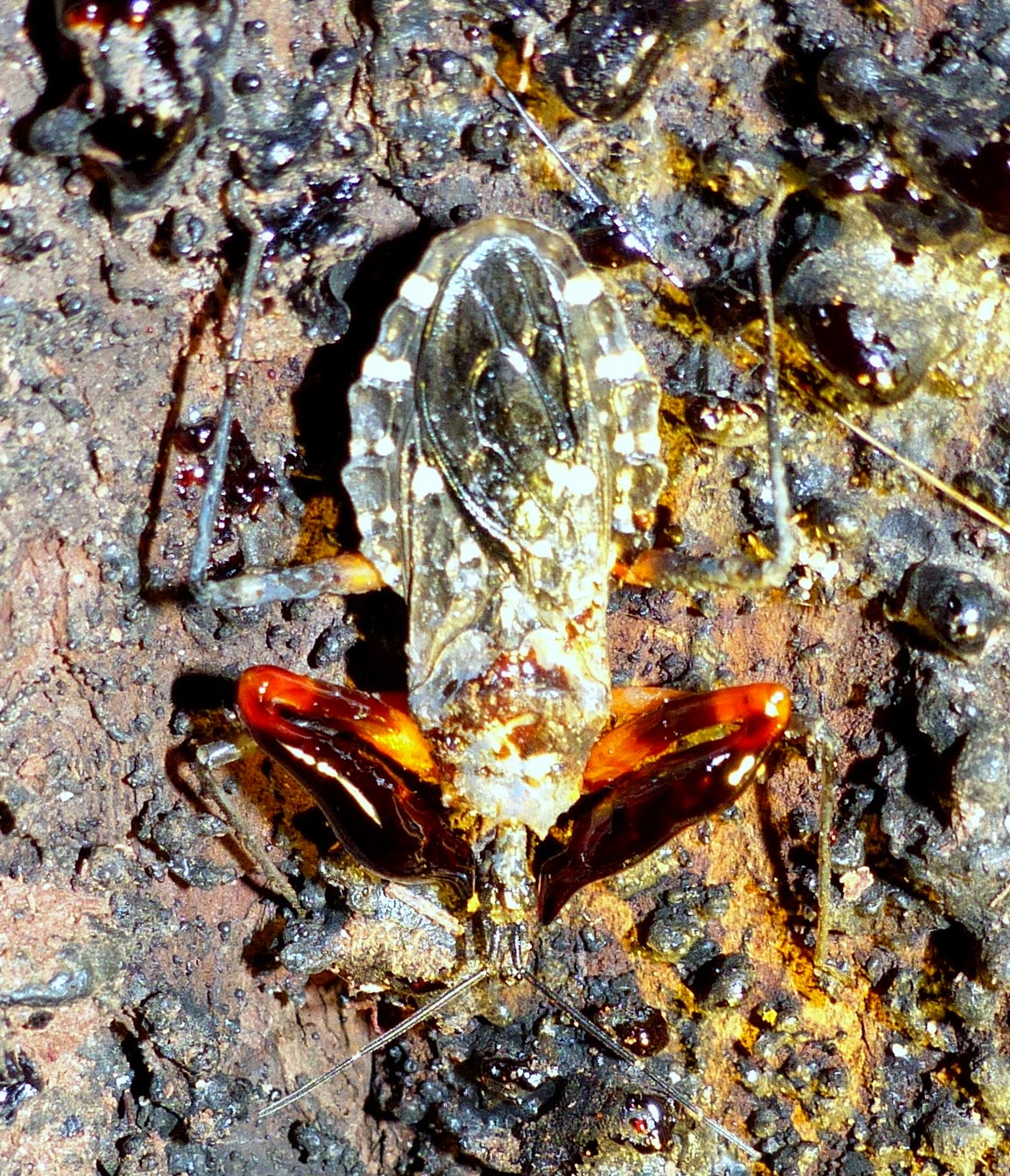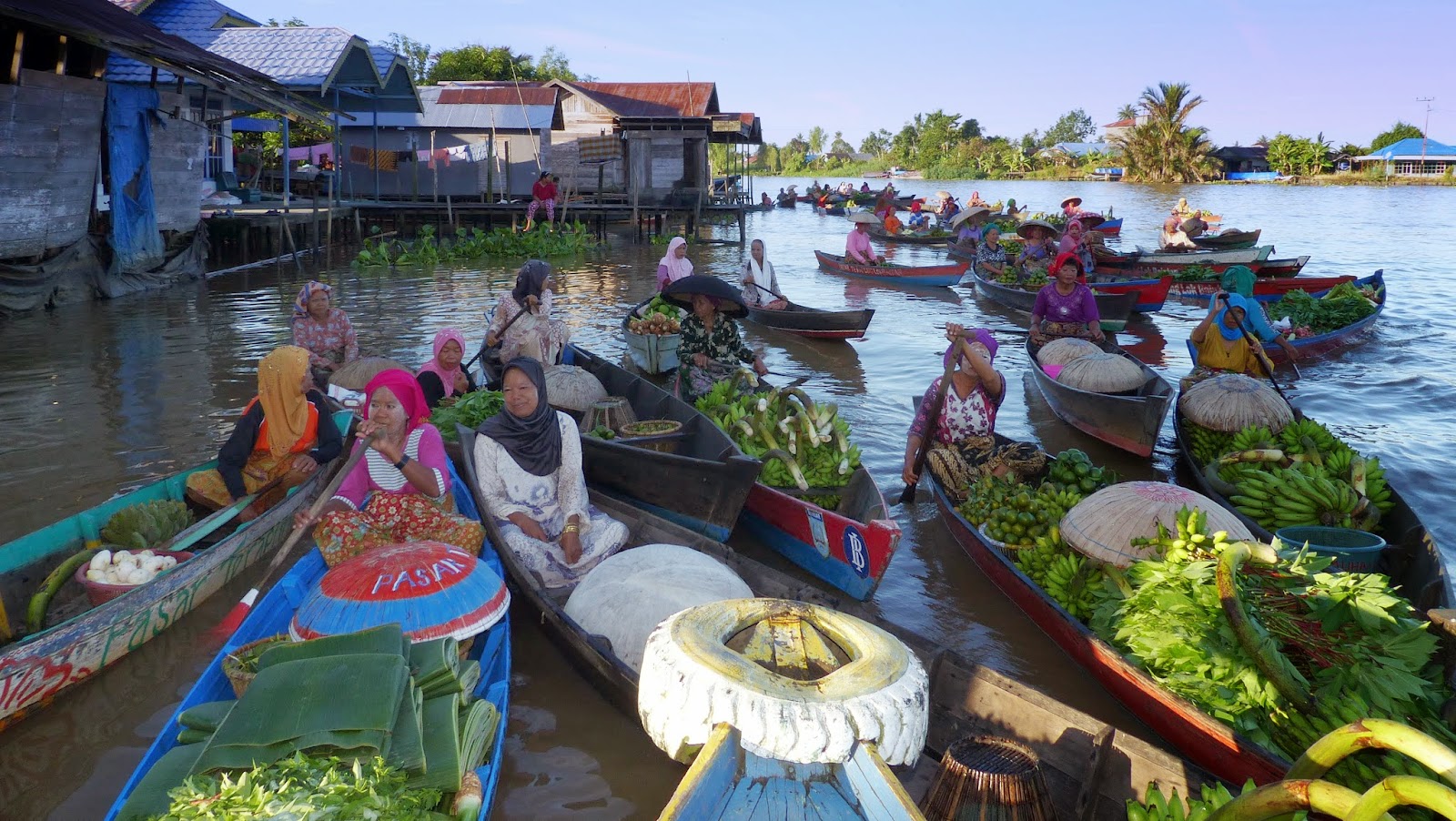In Malay language as well as in Bahasa Indonesia (i.e. the
national language of Indonesia, that in fact is a simplified version
of Malay) orang-utan means a man of the forest.
Orang-utans naturally exist only in two places on the planet - the Indonesian islands of Borneo and Sumatra.
Orang-utans naturally exist only in two places on the planet - the Indonesian islands of Borneo and Sumatra.
The best place to
admire them in their natural habitat is Tanjung Puting National Park
in the South of Borneo, near the town of Pangkalan Bun. And guess what? That's
exactly where we went. We expected the 'meeting' with the apes to be
a memorable experience; what came as a great bonus exceeding our
expectations, was the best river journey of our trip on the
narrowboat that took us to the heart of the Tanjung Puting NP.
The generic name of a boat that brought
us upriver is 'klotok'. When we saw it for the first time, the same
thought crossed our minds: 'Isn't it a bit too big for just the three
of us?' It's a double-decker barge, about 15 meters long. The whole
upper deck was just for us, so we could never complain about the lack
of living space :).
To make it clear, as usual in Indonesia, any
luxuries are not to be expected. The facilities consisted of a
table, which we could call the 'tasty table', as we were served
excellent meals on it (we don't know how they do it, but food on the
boats always tastes great!),
and three mattresses on the deck that
served as our beds at night and loungers during the day. At night a
huge mosquito net was slung over the beds, large enough to cover even
four mattresses, all our backpacks and high enough even for Raf to stand inside. The boat is a perfect means of transport
through the rainforest – far enough from it to be free from most of
its insects and predators, and still close enough to admire its
vegetation and animals on the way, in particular macaques and
proboscis monkeys jumping in the canopy; all kinds of birds
perching on the branches and lizards jumping in and out the river.
The boat was also a perfect shelter at night, we felt as if we were in
the middle of the forest, we could clearly hear all its sounds (and
the chants of all the birds, insects and other beasts are a
remarkable harmony and cacophony of sounds) and yet the narrow strip
of water protected us from all big carnivores and the thin mosquito
net from all small blood-suckers.
The orangutans in Tanjung Puting,
similar to gorillas in Uganda, are 'habituated', i.e. they live wild
in their natural habitat, but they are used to human presence.
The
key difference between the Impenetrable Forest gorillas and the
Tanjung Puting orangutans is that the former are never given any food
and each day move from one place to another (hence you need to track
and find them, which sometimes takes several hours), whereas the
latter have several feeding platforms where they come for breakfast,
lunch and dinner (so you are sure to always find them in the same
spot, where the walk takes no longer than half an hour).
Of course, the feeding
platforms are there not for the welfare of the tourists, but as a
part of the programme to increase the population of the apes (or at
least bring it back to the previous levels). It is not a zoo in any respect, the animals are in their kingdom and humans are only guests who are required to comply with strict safety and animal well-being rules...
 |
| Raf and Marco (on the way to the feeding platform) |
Usually the platform is occupied by a dominant male who just sits there for a long time and slowly consumes the big stack of bananas.
 |
| You can recognise the male by the 'padded' cheeks |
Standing there near the feeding platform is fun, like watching an action and comedy show...
 |
 |
| This one seems to be very greedy :) |
The dominant males are not too happy to share their bounty, that's why others just try to grab as much as they can and run away quickly. However, the big guys have more tolerance for mothers with babies (maybe this is their offspring?). So the females come one by one with their babies gripped to
their bellies, backs or arms.
Out of the blue the male very abruptly left the
platform, as if he was running away, 'why was that?' we asked ourselves. A few seconds later another male ran in, but instead of jumping straight away on the
bounty, he started chasing the former one up the tree. A fight
ensued, there were lots of roars and shaking branches, but the fight did not last long. The
winner soon came back to enjoy the well-deserved (or rather fought
for) lunch and after lunch stretching.
When orangutans jump from one tree to
another, the trunks bend as if they were made from rubber; it's amazing that they have such
a flexibility, how come they do not break? Sometimes they do,
actually, once we even witnessed a tree that cracked under the
weight of this big ape – lot of noise.
Sometimes other species also sneak in for the feast...
 |
| Sultans of Swing? |
 |
| Gibbon is another ape that lives in the forests of Borneo, slender, very fast and funny :) |
 |
| Also a shy little squirrel tried hard to join to party |
 |
| Tom is the real king here, which is certified by his 'royal collar' |
 |
| Sometimes Tom looks more like the new reincarnation of Darth Vader |
 |












































